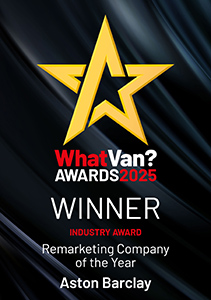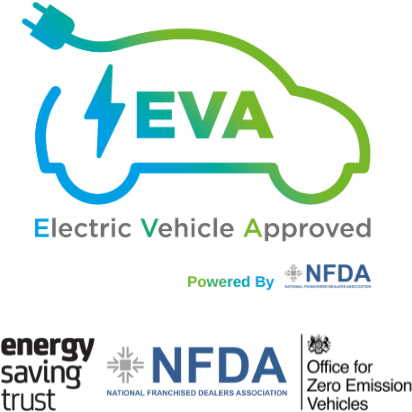
As the Electric Vehicle market is still relatively new to many, we have put together a glossary of the most frequent terms you are likely to hear around the EV marketplace.
AC Charging
Charging EVs using alternating current, typically slower but more widely available.
Battery Management System (BMS)
Manages a rechargeable battery, protecting and optimising its operation.
Battery Swapping
Technology allowing EVs to exchange a depleted battery for a fully charged one.
Brake-by-Wire
Technology in EVs where the brake system is electronically controlled rather than mechanically.
CCS (Combined Charging System):
A charging standard for EVs that allows both AC and DC charging, enabling faster speeds.
CHAdeMO
A quick charging method for EVs delivering up to 62.5 kW by direct current, found in the UK but is now used mainly in Japan.
DC Charging
Faster charging method using direct current, suitable for quick top-ups and long-distance travel.
Drive Train
The components that deliver power from the EV's motor to the wheels.
EV (Electric Vehicle)
A vehicle powered entirely by electric motors and batteries, without a traditional ICE.
Fast Charging
Charging technologies (usually DC) that charge EV batteries much faster than standard AC setups.
Grid Balancing
Ensuring stable and continuous energy supply in the electrical grid, where EVs can contribute.
Gigafactory
A term popularised by Tesla for its large-scale battery and EV manufacturing facilities.
HEV (Hybrid Electric Vehicle)
A vehicle using both an ICE and an electric motor. HEVs cannot be plugged in to charge their batteries.
Inductive Charging
Wireless charging for EVs using electromagnetic fields.
ICE (Internal Combustion Engine)
The conventional gasoline or diesel engine, in contrast to electric motors used in EVs.
Joule (Unit of Energy)
While not specific to EVs, joules measure energy and are relevant in discussions about electric power and efficiency.
kWh (Kilowatt-hour)
A unit of energy measuring the capacity of EV batteries, indicating power usage per hour.
Kinetic Brake Lights
Brake lights in EVs that vary in intensity based on the level of regenerative braking being applied.
Lithium-ion Battery
A rechargeable battery used in EVs for its high energy density and long life cycle.
Liquid Cooling System
Used in some EVs to manage the temperature of the battery pack and other components.
MPGe (Miles Per Gallon Equivalent)
Compares the fuel efficiency of EVs to ICE vehicles.
Motor Efficiency
A measure of how effectively an electric motor converts electrical energy into mechanical energy.
NMC Battery (Nickel Manganese Cobalt)
A type of lithium-ion battery with a cathode made from nickel, manganese, and cobalt, often used in EVs.
Overcharging Protection
A feature in EV battery systems to prevent charging beyond full capacity, preserving battery life.
PHEV (Plug-in Hybrid Electric Vehicle)
A hybrid vehicle that combines a battery-powered electric motor with an ICE.
Pedestrian Warning System
An artificial sound system in EVs to warn pedestrians of the vehicle's presence, as EVs are often very quiet.
Quick Charging
Another term for fast or rapid charging, often referring to DC charging methods.
Range Anxiety
Fear of running out of battery in an EV due to limited range and charging infrastructure.
Range Extender
A small combustion engine or additional battery pack used in some EVs to increase their driving range.
Solid-State Battery
A battery using solid electrodes and electrolytes, offering higher energy density and safety.
State of Charge (SoC)
The level of charge in an EV's battery expressed as a percentage of its total capacity.
Thermal Management System
Maintains optimal temperatures for the battery, motor, and electronics in EVs.
Traction Control System
A system in EVs that prevents wheel spin under acceleration by controlling the power output of the electric motor.
Ultra-Fast Charging
Extremely fast charging technology for adding significant range to an EV quickly.
Ultrasonic Sensors
Used in EVs for parking assistance and detecting nearby objects while driving.
Vehicle-to-Load (V2L)
Allows an EV to discharge energy to power external devices, turning it into a mobile power source.
Vehicle-to-Grid (V2G)
Technology that allows energy to be pushed back to the power grid from the battery of an electric vehicle.
Voltage Regulator
Ensures that the voltage level in an EV's electrical system stays within a safe range.
Wireless EV Charging
A method of charging EVs without the need for cables, typically using inductive charging technology.
Xenon Headlights
While not specific to EVs, xenon headlights are commonly used in modern vehicles, including EVs, for energy-efficient lighting.
Yield Management in Battery Production
Refers to the efficiency and effectiveness of producing EV batteries, a key factor in EV manufacturing.
Zero Emissions Vehicle (ZEV)
A vehicle emitting no tailpipe pollutants from the onboard source of power.






